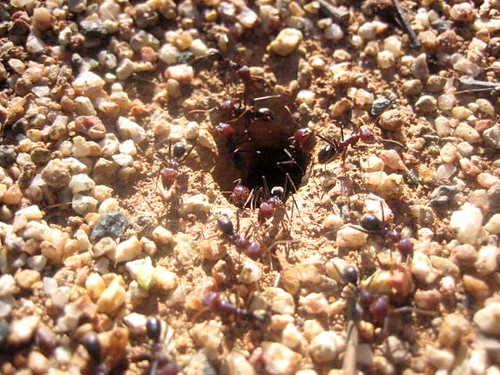"On the Road" Turns 50
5 Questions About: Led Zeppelin
Essay: What War?
Movie Swiping, Scene-Chomping Comedic Performances
5 Questions About: Dirty Harry
Cracked-Back Book Reviews: June 2007
Poem: Shut Up
The Short, Short Story Winners
Under God's Right Arm: Gays Take Massachusetts
Literary Criticism
Fantastically Bad Cinema
Essays
Under God's Right Arm
June 2006
July 2006
August 2006
September 2006
October 2006
November 2006
December 2006
January 2007
February 2007
March 2007
April 2007
May 2007
June 2007
July 2007
August 2007
September 2007
October 2007
November 2007
December 2007
January 2008
February 2008
March 2008
April 2008
May 2008
June 2008
July 2008
August 2008
September 2008
October 2008
November 2008
December 2008
January 2009
February 2009
March 2009
Alcoholic Poet
Baby Got Books
Beaman's World
BiblioAddict
Biblio Brat
Bill Crider's Pop Cultural Magazine
The Bleeding Tree
Blog Cabins: Movie Reviews
A Book Blogger's Diary
BookClover
Bookgasm
Bookgirl's Nightstand
Books I Done Read
Book Stack
The Book Trib
Cold Hard Football Facts
Creator of Circumstance
D-Movie Critic
The Dark Phantom Review
The Dark Sublime
Darque Reviews
Dave's Movie Reviews
Dane of War
David H. Schleicher
Devourer of Books
A Dribble of Ink
The Drunken Severed Head
Editorial Ass
Emerging Emma
Enter the Octopus
Fatally Yours
Flickhead
The Genre Files
The Gravel Pit
Gravetapping
Hello! Yoshi
HighTalk
Highway 62
The Horrors Of It All
In No Particular Order
It's A Blog Eat Blog World
Killer Kittens From Beyond the Grave
The Lair of the Evil DM
Loose Leafs From a Commonplace
Lost in the Frame
Little Black Duck
Madam Miaow Says
McSweeney's
Metaxucafe
Mike Snider on Poetry
The Millions
Moon in the Gutter
New Movie Cynics Reviews
Naked Without Books
A Newbie's Guide to Publishing
New & Improved Ed Gorman
9 to 5 Poet
No Smoking in the Skull Cave
Orpheus Sings the Guitar Electric
Polly Frost's Blog
Pop Sensation
Raincoaster
R.A. Salvatore
Reading is My Superpower
Richard Gibson
SciFi Chick
She Is Too Fond Of Books
The Short Review
Small Crimes
So Many Books
The Soulless Machine Review
Sunset Gun
That Shakesperherian Rag
Thorne's World
The Toasted Scrimitar
This Distracted Globe
Tomb It May Concern
2 Blowhards
Under God's Right Arm
A Variety of Words
The Vault of Horrr
Ward 6
When the Dead Walk the Earth
The World in the Satin Bag
Zoe's Fantasy
Zombo's Closet of Horror
Bookaholic Blogring
Power By Ringsurf
(When they aren’t parading off with our peanut butter and jelly sandwiches during picnics, DaRK PaRTY has a thing for ants. No not Adam Ant – although we do have a fondness for “Stand and Deliver” – but real ants. Call us nuts, but what’s not to like about Camponontus perthiana or Oecophylla longinoda? So that’s why we decided it was crucial that we meet Alex Wild, an entomologist and naturalists, working as a research scientist at the University of Arizona. Alex is also an accomplished nature photograph – specializing in insects – especially ants. You can find his work at here.)
DaRK PaRTY: Ants are eusocial insects. Can you describe what that means in layman ter ms?
ms?
Alex: Sure. The term refers to a particular form of society that is even more specialized than that of our own species. Instead of merely living together and interacting in groups, eusocial species have evolved to the point where most individuals have given up reproduction entirely, leaving procreation in the hands of one or a few highly fecund individuals.
Imagine a human city where only a few bloated individuals pop out all
the babies while everyone else keeps their head down and works the factories, tends the fields, and builds the roads. That’s what ants do. They’ve evolved separate reproductive castes and worker castes. Their specialization allows the worker caste to conduct their labor without the distraction of all the time and costs of courtship and reproduction, and allows the reproductive caste to be highly prolific.
Eusocial systems are very efficient. They are also fundamentally
different from social systems like our own, so I’d be cautious about drawing too many parallels.
Eusociality must have some advantages as it has evolved in many
disparate groups of animals. Many people know about the ants, the termites, the bees, and the wasps, but there are also eusocial shrimp, eusocial aphids, and a eusocial mammal, the naked mole rat of
DP: As social insects, ants are excellent communicators. How do ants "talk" to one another and how advanced is there communication?
Alex: That depends on what species of ant you are talking about. No one really knows how many species of ants there are, but we estimate that there might be around 20,000. Spread across that tremendous diversity are a great number of different ways to communicate, and a great variation in the extent to which social behavior and communication ability is developed.
Ants are predominantly chemical, “talking” with each other by what we would consider to be smell and taste. When an ant nest is attacked, for example, some ants will release a volatile chemical that acts as an alarm siren, priming their nestmates to be on the alert and to start acting aggressively.
Different ant species will use different chemicals to do this, produced in glands in different parts of the body. Most ants release their alarm pheromone from a gland in their mouth, but others use glands at the tip of the abdomen. One of my favorites is a group of pudgy little orange ants in the genus Lasius whose alarm pheromone is citronella. If you disturb a nest of these ants the air fills with a thick citronella odor. Some other species smell like blue cheese and others smell like feces.
Chemicals are also used to lay trails to food sources, to mark territories, to attract mates, and to regulate reproduction. Ants use chemical odors to tell if another ant is from their own colony or a different colony, as each ant colony has a specific odor. Some species can even tell what job a particular worker ant does by its odor.
One of the most striking behaviors of ant colonies is called trophallaxis, or liquid food sharing. Ants will feed each other continually, passin g food among ants in much greater volumes than the individual ants need to survive. A constant flow of liquid among colony members helps spread chemical messages and helps to maintain the colony as a coherent unit.
g food among ants in much greater volumes than the individual ants need to survive. A constant flow of liquid among colony members helps spread chemical messages and helps to maintain the colony as a coherent unit.
Some ants are able to use sound to communicate. If a leafcutter ant is trapped, she will squeak until her nestmates come to her rescue. Ants also push and pull each other around.
DP: Is it true that ant colonies will attack one another and even capture enemy ants to use as slave labor? Please explain.
Alex: Yes, although this so-called “slave-raiding” is limited to a subset of species. The key to understanding this behavior is to grasp that young ants imprint on the colonies where they emerge from their cocoons. They think they belong to the nest where they were born.
Adult ants are rarely taken in raids, and the raiders normally target the immature ants, the larvae and the pupae. The captured pupae metamorphose into adult ants in the raider’s nest and imprint on
it. Once these captives begin working, they carry on as though they
were in the own nest. No one is holding them against their will.
Some species take “slaves” opportunistically and can survive without
them. But there are other species that have developed the behavior to the point where they are incapable of caring for themselves and have to raid other ant nests if their larvae are to be fed and their nests maintained. The genus Polyergus is the best known of these obligate parasites, they are bright red ants and they conduct spectacular raids on summer afternoons. In some respects it’s an easy way to make a living: let other ants expend all the energy working while you can skim off their labor and use it for your reproduction.
As the ant “slaves” do not recognize their condition, ant slavery is
not really comparable to human slavery and there has been recent discussion among myrmecologists (ant biologists) about adopting a different terminology less burdened with anthropocentric meaning.
DP: Other than humans and primates, ants seem to be the only creatures on earth that learn and teach. How do they do this?
Alex: Well, that’s still a contentious issue among researchers. Whether ants can teach each other is partly a function of the semantics of the word “teaching.” A study done in the
Is that teaching? Maybe. But I’m happy to leave this one for the
philosophers. I suspect the story that only ants and primates can
teach does a disservice to all those other species out there that have not yet been studied.
DP: Why did you begin to study ants and why do you think you're so fascinated by myrmecology?
Myrmecology does win new converts, though. Once one sees an ant through a microscope, magnified to a size comprehensible to we humans, a whole world is opened up. Ants have little faces, intricate sculptured armor for skin, spikes and spines, often with an iridescent sheen. Each one looks like a work of art.
Read our interview about Jack the Ripper
Labels: 5 Questions, Alex Wild, Ants, interview
 StumbleUpon |
StumbleUpon |
 del.icio.us |
del.icio.us |
 Technorati |
Technorati |

This work is licensed under a Creative Commons Attribution-No Derivative Works 3.0 License.
The Template is generated via PsycHo and is Licensed.





"In this verse, there is a clear evidence that ants have a language to understand one another and Allah gifted Suleiman with the ability to hear and understand these sounds. The scientists attempt to grasp these acoustic signals that ants utter. Yet, they distinguished four different kinds of these sounds after very long years of watching."
This is from 14 centuries. From the glorious Qura'an. It should be time for those who have doubts about Mohammad to question themselves...
Ants talk here:
http://home.olemiss.edu/~hickling/
More to read here:
http://www.bismikaallahuma.org/archi...-in-the-quran/
And here:
http://knol.google.com/k/ahmed-abdo/ants-speak/1nf8rodgg6k5e/1#
__________
who is Dr. Maurice Bucaille..?where is her from? and what does he say about......
BTW look at the design I've made myself High class escort